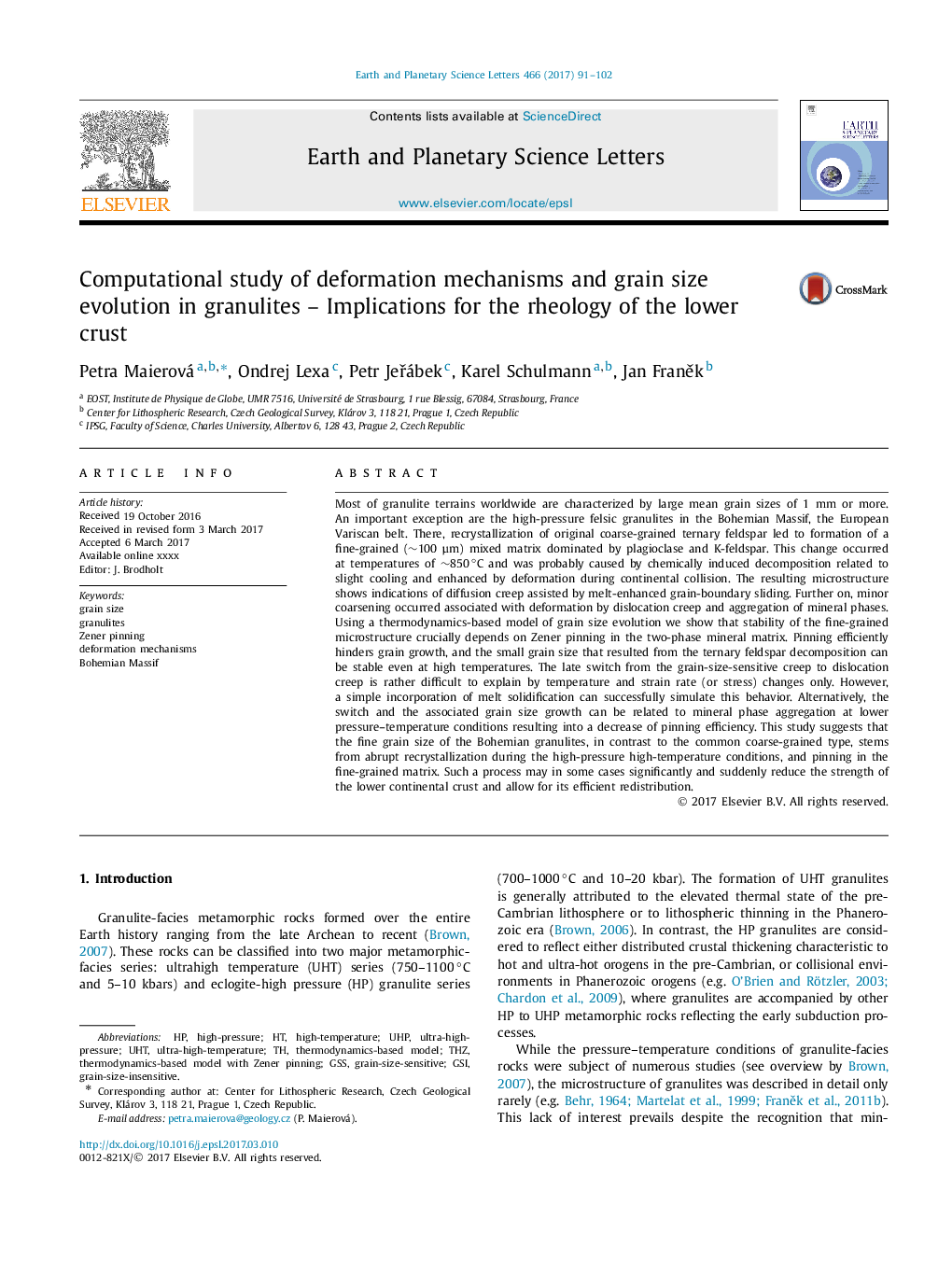| کد مقاله | کد نشریه | سال انتشار | مقاله انگلیسی | نسخه تمام متن |
|---|---|---|---|---|
| 5779962 | 1634690 | 2017 | 12 صفحه PDF | دانلود رایگان |
عنوان انگلیسی مقاله ISI
Computational study of deformation mechanisms and grain size evolution in granulites - Implications for the rheology of the lower crust
ترجمه فارسی عنوان
مطالعه محاسباتی مکانیزم های تغییر شکل و تکامل دانه در گرانولیت ها - تاثیرات بر روی زمین شناسی پوسته پایین
دانلود مقاله + سفارش ترجمه
دانلود مقاله ISI انگلیسی
رایگان برای ایرانیان
کلمات کلیدی
موضوعات مرتبط
مهندسی و علوم پایه
علوم زمین و سیارات
علوم زمین و سیاره ای (عمومی)
چکیده انگلیسی
Most of granulite terrains worldwide are characterized by large mean grain sizes of 1 mm or more. An important exception are the high-pressure felsic granulites in the Bohemian Massif, the European Variscan belt. There, recrystallization of original coarse-grained ternary feldspar led to formation of a fine-grained (â¼100 μm) mixed matrix dominated by plagioclase and K-feldspar. This change occurred at temperatures of â¼850â°C and was probably caused by chemically induced decomposition related to slight cooling and enhanced by deformation during continental collision. The resulting microstructure shows indications of diffusion creep assisted by melt-enhanced grain-boundary sliding. Further on, minor coarsening occurred associated with deformation by dislocation creep and aggregation of mineral phases. Using a thermodynamics-based model of grain size evolution we show that stability of the fine-grained microstructure crucially depends on Zener pinning in the two-phase mineral matrix. Pinning efficiently hinders grain growth, and the small grain size that resulted from the ternary feldspar decomposition can be stable even at high temperatures. The late switch from the grain-size-sensitive creep to dislocation creep is rather difficult to explain by temperature and strain rate (or stress) changes only. However, a simple incorporation of melt solidification can successfully simulate this behavior. Alternatively, the switch and the associated grain size growth can be related to mineral phase aggregation at lower pressure-temperature conditions resulting into a decrease of pinning efficiency. This study suggests that the fine grain size of the Bohemian granulites, in contrast to the common coarse-grained type, stems from abrupt recrystallization during the high-pressure high-temperature conditions, and pinning in the fine-grained matrix. Such a process may in some cases significantly and suddenly reduce the strength of the lower continental crust and allow for its efficient redistribution.
ناشر
Database: Elsevier - ScienceDirect (ساینس دایرکت)
Journal: Earth and Planetary Science Letters - Volume 466, 15 May 2017, Pages 91-102
Journal: Earth and Planetary Science Letters - Volume 466, 15 May 2017, Pages 91-102
نویسندگان
Petra Maierová, Ondrej Lexa, Petr JeÅábek, Karel Schulmann, Jan FranÄk,
